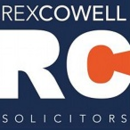Hybrid assured shorthold tenancy
In January 2017, in a decision that will be required reading for property landlords, the Court of Appeal has confirmed the validity of a form of assured shorthold tenancy that has been in common use for many years. At the same time, the Court defined the concept of ‘ownership’ in the context of council tax liabilities.
The case of Leeds City Council v Broadley concerned a property investor who rented out residential premises to tenants on the basis of standard form leases that are ubiquitous in the private rental sector. Each lease was for a term of six or 12 months and thereafter continued on a month-by-month basis. The obligation to pay council tax rested on the tenant.
Putting forward a novel argument, a local authority submitted that leases must either be for a fixed or a periodic term and that ‘hybrid’ leases are invalid. It was submitted that the lease concerned in the case had to be viewed either as for a fixed term, followed by a periodic tenancy, or as a monthly periodic tenancy that could not be terminated in its first six or 12 months.
On that basis, the council argued that the lease had not been granted for a period of six months or more and that relevant tenants could thus not be viewed as ‘owners’ within the meaning of Section 6 of the Local Government Finance Act 1992. That, it was submitted, meant that when a tenant ceased to occupy a property during the term of the lease, the liability to pay Council Tax reverted to the landlord.
In rejecting those arguments and dismissing the council’s appeal against an earlier decision to like effect, the Court found that the form of lease in question was valid. Such leases reflected an obvious commercial reality and provided a benefit to both landlord and tenant in offering a degree of initial certainty with a degree of flexibility thereafter.
[edit] Find out more
[edit] Related articles on Designing Buildings Wiki
Featured articles and news
Deputy editor of AT, Tim Fraser, discusses the newly formed society with its current chair, Chris Halligan MCIAT.
Barratt Lo-E passivhaus standard homes planned enmasse
With an initial 728 Lo-E homes across two sites and many more planned for the future.
Government urged to uphold Warm Homes commitment
ECA and industry bodies write to Government concerning its 13.2 billion Warm Homes manifesto commitment.
Places of Worship in Britain and Ireland, 1929-1990. Book review.
The emancipation of women in art.
CIOB Construction Manager of the Year 2025
Just one of the winners at the CIOB Awards 2025.
Call for independent National Grenfell oversight mechanism
MHCLG share findings of Building Safety Inquiry in letter to Secretary of State and Minister for Building Safety.
The Architectural Technology Awards
AT Awards now open for this the sixth decade of CIAT.
50th Golden anniversary ECA Edmundson awards
Deadline for submissions Friday 30 May 2025.
The benefits of precast, off-site foundation systems
Top ten benefits of this notable innovation.
Encouraging individuals to take action saving water at home, work, and in their communities.
Takes a community to support mental health and wellbeing
The why of becoming a Mental Health Instructor explained.
Mental health awareness week 13-18 May
The theme is communities, they can provide a sense of belonging, safety, support in hard times, and a sense purpose.
Mental health support on the rise but workers still struggling
CIOB Understanding Mental Health in the Built Environment 2025 shows.
Design and construction material libraries
Material, sample, product or detail libraries a key component of any architectural design practice.
Construction Products Reform Green Paper and Consultation
Still time to respond as consultation closes on 21 May 2025.
Resilient façade systems for smog reduction in Shanghai
A technical approach using computer simulation and analysis of solar radiation, wind patterns, and ventilation.
























